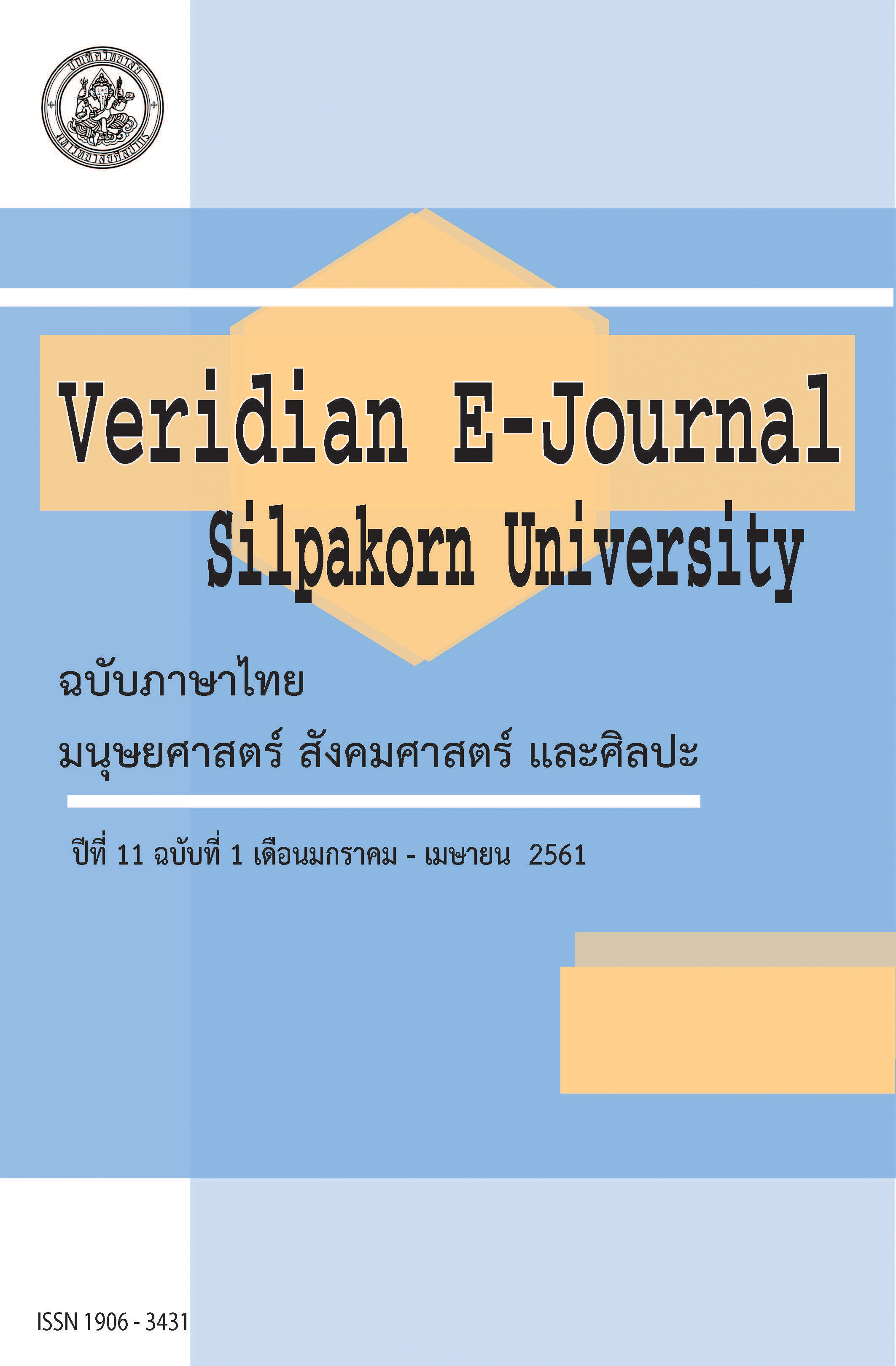ประสิทธิผลของการนำแนวคิดการจัดการศึกษาแบบเชิญชวนสู่การปฏิบัติในโรงเรียน (The Effectiveness of the Invitational Concept Implemented in Schools)
Main Article Content
Abstract
วัตถุประสงค์ของการวิจัยเพื่อ (1) ศึกษาประสิทธิผลของการนำแนวคิดการจัดการศึกษาแบบเชิญชวนไปปฏิบัติในโรงเรียน จากความคิดเห็นของนักเรียน ผู้ปกครอง ผู้บริหารสถานศึกษา ครู และคณะกรรมการประเมิน (2) เปรียบเทียบความคิดเห็นของนักเรียน ผู้ปกครอง ผู้บริหารสถานศึกษา ครู และคณะกรรมการประเมินต่อสภาพของโรงเรียนก่อนและหลังการจัดการศึกษาแบบเชิญชวน (3) ศึกษาประสิทธิผลของการจัดการศึกษาแบบเชิญชวนในโรงเรียนตามความคิดเห็นของกลุ่มตัวอย่างเทียบเคียงกับความคิดเห็นของคณะกรรมการประเมิน และ (4) ศึกษาเจตคติของผู้บริหารสถานศึกษาและครูต่อการจัดการศึกษาแบบเชิญชวน
ประชากรที่ใช้ในการวิจัยประกอบด้วย นักเรียน จำนวน 1,207 คน ผู้ปกครอง 1,207 คน ผู้บริหารสถานศึกษาและครู 73 คน คณะกรรมการสถานศึกษา 10 คน ในโรงเรียนวัดศรีสำราญราษฎร์บำรุง จังหวัดสมุทรสาคร และนักเรียน 734 คน ผู้ปกครอง 734 คน ผู้บริหารสถานศึกษาและครู 50 คน คณะกรรมการสถานศึกษา 10 คน ในโรงเรียนสุเหร่าแสนแสบ จังหวัดกรุงเทพมหานคร กลุ่มตัวอย่างนักเรียนทั้งสองโรงเรียน ได้มาโดยการสุ่มอย่างง่าย จำนวน 15 ห้องเรียน 618 คน ในโรงเรียนวัดศรีสำราญราษฎร์บำรุง และ 11 ห้องเรียน 365 คน ในโรงเรียนสุเหร่าแสนแสบ กลุ่มตัวอย่างผู้ปกครองประกอบด้วย ผู้ปกครองของนักเรียนที่เป็นกลุ่มตัวอย่าง กลุ่มตัวอย่างคณะกรรมการสถานศึกษาสุ่มอย่างเฉพาะเจาะจงจากกรรมการที่มิใช่ผู้บริหารสถานศึกษาและครูในโรงเรียน กลุ่มตัวอย่างผู้บริหารสถานศึกษาและครู ได้แก่ ผู้บริหารและครูที่เข้าอบรมการนำการจัดการศึกษาแบบเชิญชวนไปสู่การปฏิบัติในโรงเรียนซึ่งผู้วิจัยจัด และผู้บริหารและครูที่เข้าร่วมประชุมสรุปผลการนำการจัดการศึกษาแบบเชิญชวนไปปฏิบัติ ส่วนผู้วิจัยเป็นคณะกรรมการการประเมิน (5 คน) กลุ่มตัวอย่างตอบแบบสำรวจความเป็นโรงเรียนแบบเชิญชวน ซึ่งปรับมาจากแบบสำรวจของ IAIE (International Alliance for International Education) เป็นการแสดงความคิดเห็นครั้งที่ 1 หลังจากนั้นผู้บริหารสถานศึกษาและครูเข้าอบรมแนวคิดการจัดการศึกษาแบบเชิญชวนและการนำไปปฏิบัติ แล้วไปเยี่ยมชมโรงเรียนแบบเชิญชวน 2 โรงเรียนที่ฮ่องกง ขั้นต่อไปผู้บริหารสถานศึกษาและครูจัดทำแผนปฏิบัติการและนำไปใช้เป็นเวลา 1 ปีการศึกษา ขั้นสุดท้ายกลุ่มตัวอย่างแสดงความคิดเห็นครั้งที่ 2 ตามแบบสำรวจความเป็นโรงเรียนแบบเชิญชวนและผู้บริหารสถานศึกษาและครูแสดงเจตคติต่อการจัดการศึกษาแบบเชิญชวนด้วยกิจกรรม 3 F’s (facts, feeling, future) ในแต่ละโรงเรียน นำความคิดเห็นครั้งที่ 1 และความคิดเห็นครั้งที่ 2 ต่อสภาพของโรงเรียนตามองค์ประกอบของการจัดการศึกษาแบบเชิญชวน 5 ด้าน คือ บุคคล สถานที่ นโยบาย โปรแกรม และกระบวนการ มาเปรียบเทียบโดยใช้การทดสอบค่า t วิเคราะห์เชิงพรรณนาสรุปความคิดเห็นของกลุ่มตัวอย่างเทียบเคียงกับความคิดเห็นของคณะกรรมการประเมิน รวมถึงเจตคติของผู้บริหารสถานศึกษา และครู
ผลการวิจัยในทั้ง 2 โรงเรียน พบความสอดคล้อง คือ ความคิดเห็นครั้งที่ 1 กับ ความคิดเห็นครั้งที่ 2 ของนักเรียนอยู่ในระดับมาก และแตกต่างกันที่ระดับความมีนัยสำคัญ .05 โดยค่าเฉลี่ยของความคิดเห็นครั้งที่ 1 สูงกว่าครั้งที่ 2 ส่วนความคิดเห็นครั้งที่ 1 และครั้งที่ 2 ของผู้ปกครองอยู่ในระดับมากและไม่แตกต่างกัน สำหรับความคิดเห็นของผู้บริหารสถานศึกษา ครู และคณะกรรมการสถานศึกษาอยู่ในระดับมาก และแตกต่างกันที่ระดับความมีนัยสำคัญ .05 โดยค่าเฉลี่ยของความคิดเห็นครั้งที่ 2 สูงกว่าครั้งที่ 1 ทั้งนี้ความคิดเห็นครั้งที่ 1 และครั้งที่ 2 ของคณะกรรมการการประเมินอยู่ในระดับมาก และไม่แตกต่างกัน
The objectives of this research were to (1) study the effectiveness of implementing the invitational education in the sample school, from the students’ , parents’ , school administrators’ , teachers’ , school board members’ , and evaluators’ opinions, (2) compare the student’s, parents’ , school administrators’ , teachers’ , school board member’ , and evaluators’ opinions towards the schools’ conditions before and after implementing the invitational education, (3) study the effectiveness of the invitational education management in schools according to the sample groups’ opinions comparing with the evaluators’ opinions, and (4) study the school administrators and teachers’ attitudes towards the invitational education.
The research population comprised 1,207 students, 1,207 parents, 73 school administrators and teachers, and 10 members of the school board of Wat Srisamran Ratbamrung School in Samutsakorn Province, and 734 students, 734 parents, 50 school administrators and teachers, and 10 members of the school board of Surao Sansaeb School in Bangkok. The sample groups of students in both schools were selected simple randomly and consisted of 618 Wat Srisamran Ratbamrung student from 15 classes, and 365 Surao Sansaeb students from 11 classes, while these students’ parents were automatically the research sample. The members of the school board who were not school administrators and teachers were purposively selected. The sample school administrators and teachers were those who joined the workshop on “Invitational Education Implementation in Schools” organized by the researchers, and those who attended the conclusion meeting to follow up the results of the invitational education implementation. The researchers acted as the evaluators.
All sample groups gave their first response to the Inviting School Survey which was adapted from the International Alliance for Invitational Education’s Inviting School Survey. Next, the school administrators and teachers attended a workshop introducing the invitational education concept and practice and, after the completion of the workshop, visited the two
inviting schools in Hong Kong. Upon returning, they prepared action plans, then implemented the plans in schools for one academic year. At the end of the year, all sample groups gave their second response to the Inviting School Survey, and the school administrators and teachers revealed their attitudes towards invitational education through the 3 F’s open-ended questionnaire.
In each school, the students’ , parents’ , school administrators and teachers’ , and school board members’ first and second round opinions towards their school condition according to the five invitational education components-people, places, policies, programs, and processes were compared by means of t-test. Descriptive analysis from the mean values was used to conclude the sample groups’ opinions comparing with and the evaluators’ opinions, including the school administrators’ and teachers’ attitudes.
The research findings in both schools were in concert : the students’ first and second-round opinions were at a high level and were statistically different at the .05 level of significance, and the mean value of the first-round opinion was higher than the second one; the parents’ first and second-round opinions were at a high level and were not statistically different; the school administrators and teachers’ , and the school board members’ first and second-round opinions were at a high level and were statistically different at the .05 level of significance, and the mean value of the second-round opinions were higher than the first ones; the evaluators’ first and second-round opinions were at a high level and were not statistically different.

